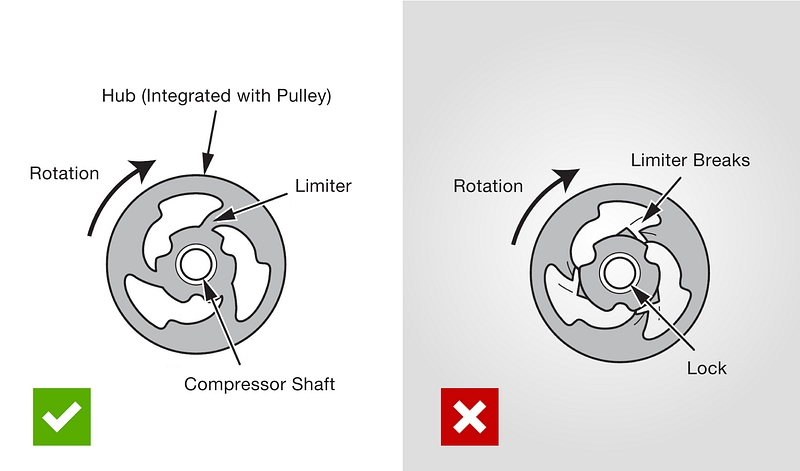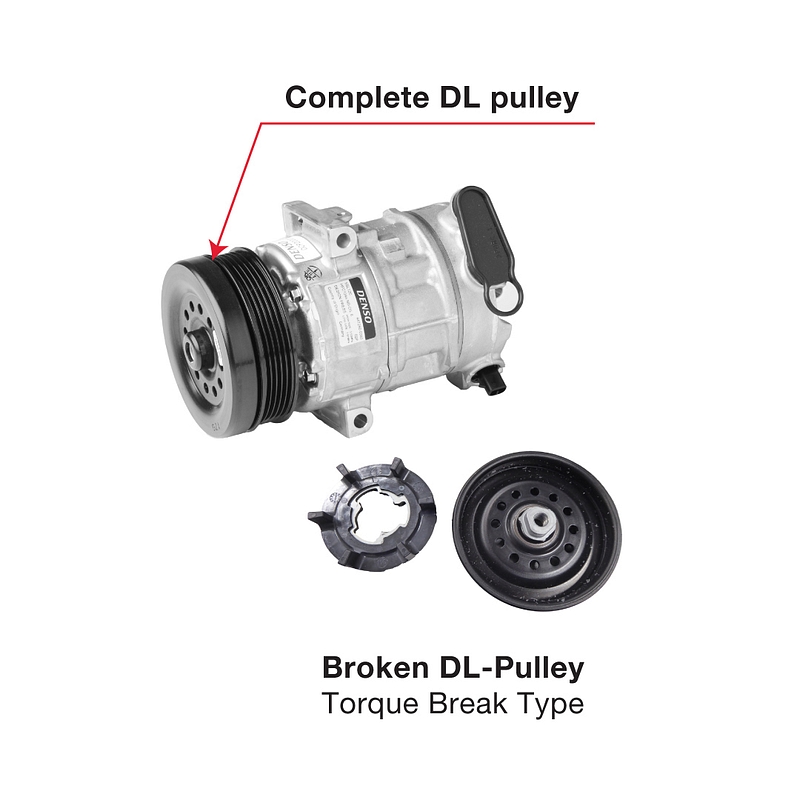Watch out for damper limiter pulley failure
Modern, small capacity engines are particularly prone to vibration, which is why VMs have turned to their OE supply partners for solutions and as a result, many are fitted with vibration absorption devices such as a torsional vibration damper (TVD), dual mass flywheel (DMF) and overrunning alternator pulley (OAP).

Although, not directly related to engine vibration, the damper limiter (DL) pulley is an associated component within the FEAD system that is mounted on most variable displacement type AC compressors and its purpose is to provide a safety mechanism that prevents the auxiliary belt from breaking should the compressor seize, for example. When the limiter breaks, the pulley can run freely, so the FEAD system can continue to function and drive other important components such as the alternator, power steering pump and water pump. Returning to the problem of vibration, it is important to state that some DL pulleys also incorporate a mass damper, which is designed to dampen variations in engine speed.

Why do DL pulleys fail?
The main reasons, why the limiter mechanism within the DL pulley breaks are:
- Excessive negative force on the pulley, due to too much drive belt movement, which can be caused by several parts within the FEAD system, so requires further investigation. Therefore, carry out a visual inspection with the engine idling, and then with the engine speed increasing and decreasing. If the drive belt has too much movement, inspect and, if necessary, replace the following parts: OAP, TVD, idler pulley and the automatic belt tensioner. In addition, check the DMF as sometimes, for economic reasons, the DMF is replaced by a solid flywheel, which can cause an increase in engine vibrations.
- Continuously changing force on the pulley, due to severe rotation speed fluctuation of the engine, which can be caused by the fuel injection system, ignition system, exhaust emission control system or camshaft timing, for example, rough idling or rough running.
- Excessive force on the pulley, due to too much engine torque from enhanced torque output after chip-tuning, for example.
- Liquid lock of the AC compressor, which is usually caused by charging the liquid refrigerant to the low pressure side of the vehicle’s AC system, or the creation of ‘refrigerant mist’, also in the system’s low pressure side, usually caused by a faulty expansion valve or an excessive amount of refrigerant. Too much compressor oil is another reason.
- Too much friction within the compressor’s internal components, which can be caused by the use of the wrong type of compressor oil, too much or the wrong UV-dye, insufficient oil and refrigerant mixture or ineffective cleaning of the refrigerant cycle.
- Vacuum lock, which can be caused when the AC system is under vacuum and the engine is accidentally started. Due to the vacuum, the swash plate inside the variable displacement compressor, is moved beyond its maximum displacement position. When the engine is running when the compressor is in this condition, its pistons will hit the inner wall of the crankcase and the compressor locks.

Aftermarket range and availability
The OE AC compressors in the DENSO Aftermarket range provide the independent service and repair sector with a comprehensive range of replacement options for the vast majority of the European vehicle parc and is widely available from its distribution partners across Europe.
All new DENSO compressors are pre-filled with the right type of compressor oil, but before installing the replacement, read the ‘DENSO Compressor Installation Guide’, which is enclosed in the packaging or can be downloaded, in different languages, from the DENSO Aftermarket website.
Further details of the DENSO Aftermarket programme are available online at: www.denso-am.eu

.




















































